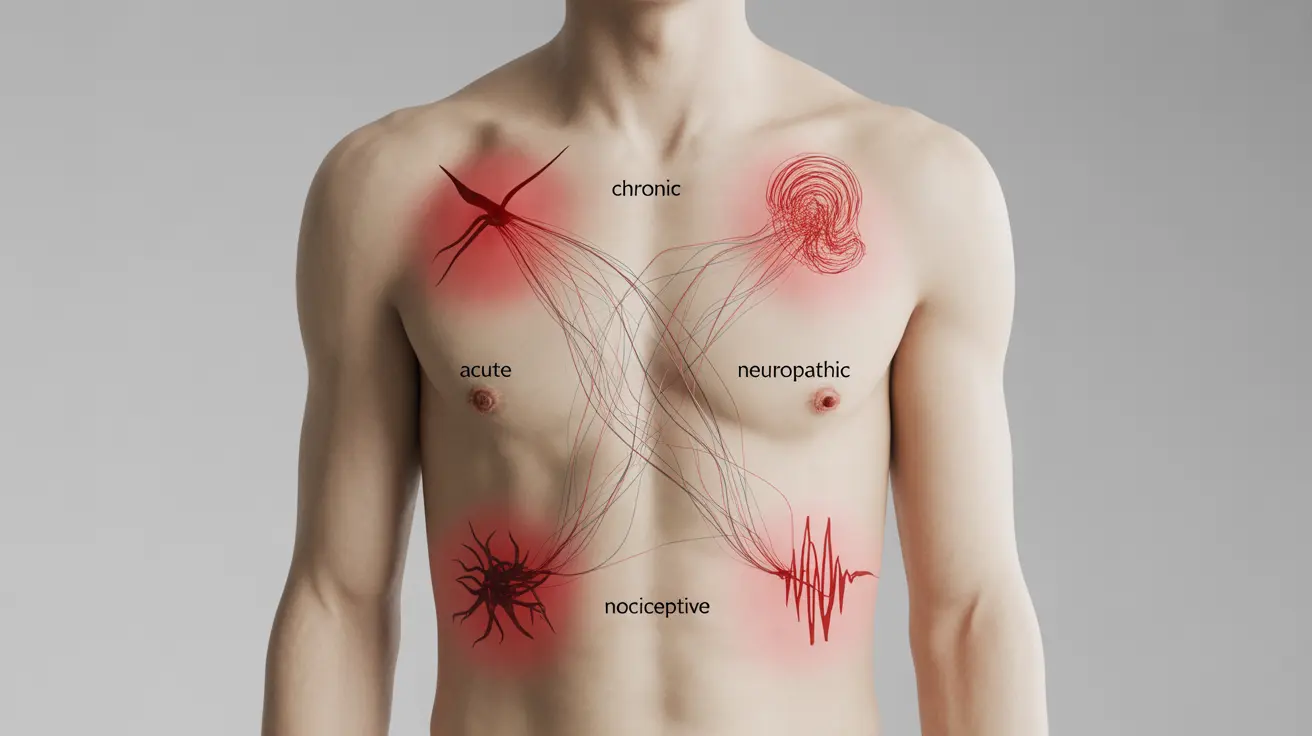Pain is a complex and universal human experience that serves as our body's natural warning system. While it can be challenging to deal with, understanding the different types of pain, their causes, and available treatment options is crucial for effective management and improved quality of life.
Whether you're experiencing temporary discomfort or dealing with long-term pain conditions, this comprehensive guide will help you understand pain better and explore various treatment approaches available in modern medicine.
Types of Pain: Understanding the Differences
Pain can be broadly categorized into several distinct types, each requiring different approaches to treatment:
Acute Pain
Acute pain is sudden and typically has a clear cause, such as injury or surgery. It usually resolves within three months as the body heals. This type of pain serves as a protective mechanism, alerting us to potential danger or damage.
Chronic Pain
When pain persists beyond three to six months or continues after the underlying condition has healed, it's classified as chronic pain. This type can significantly impact daily life and often requires a comprehensive management approach.
Nociceptive Pain
This is the most common type of pain, resulting from tissue damage. It can be either somatic (affecting skin, muscles, and bones) or visceral (affecting internal organs).
Neuropathic Pain
Caused by nerve damage or dysfunction, neuropathic pain often feels like burning, shooting, or tingling sensations. It may occur in conditions like diabetic neuropathy or after shingles.
Common Causes and Warning Signs
Pain can arise from various sources and conditions:
- Injury or trauma
- Inflammation
- Degenerative conditions
- Nerve compression or damage
- Autoimmune disorders
- Cancer
- Infection
Seek immediate medical attention if you experience:
- Severe, unexplained pain
- Pain accompanied by fever
- Pain that significantly limits mobility
- Pain that disrupts sleep or daily activities
- Chest pain or difficulty breathing
Modern Treatment Approaches
Non-Medication Treatments
Many effective pain management strategies don't require medication:
- Physical therapy
- Exercise and stretching
- Massage therapy
- Acupuncture
- Heat and cold therapy
- Relaxation techniques
- Cognitive behavioral therapy
Medication Options
When necessary, various medications can help manage pain effectively:
- Over-the-counter pain relievers
- Anti-inflammatory drugs
- Topical treatments
- Antidepressants (for certain types of pain)
- Anticonvulsants (for nerve pain)
- Muscle relaxants
Frequently Asked Questions
What are the different types of pain and how can I tell if my pain is acute or chronic?
Acute pain typically lasts less than three months and has a clear cause, while chronic pain persists beyond three to six months. Acute pain usually improves with healing, whereas chronic pain may continue even after the original injury has healed. The intensity, duration, and impact on daily activities can help distinguish between the two types.
What are the common causes of pain and when should I see a doctor for pain management?
Pain can be caused by injury, inflammation, nerve damage, or underlying medical conditions. Seek medical attention if your pain is severe, persistent, accompanied by other symptoms, or significantly impacts your daily activities. Always get immediate care for chest pain or pain accompanied by difficulty breathing.
What non-opioid treatment options are available for managing chronic pain?
Non-opioid options include physical therapy, exercise, acupuncture, cognitive behavioral therapy, and non-opioid medications like NSAIDs, anticonvulsants, and antidepressants. Many people find relief through a combination of these approaches, tailored to their specific condition.
How do physical therapies and psychological treatments help in reducing pain?
Physical therapy strengthens muscles, improves flexibility, and promotes proper body mechanics, while psychological treatments like cognitive behavioral therapy help develop coping strategies and address the emotional aspects of chronic pain. Together, these approaches can significantly improve pain management and quality of life.
What medications are typically used for nerve-related pain and what are their side effects?
Medications for nerve pain include anticonvulsants (like gabapentin and pregabalin) and certain antidepressants (such as duloxetine and amitriptyline). Common side effects may include drowsiness, dizziness, and dry mouth. These medications should be taken under medical supervision, and dosages may need adjustment to find the right balance between pain relief and side effects.




